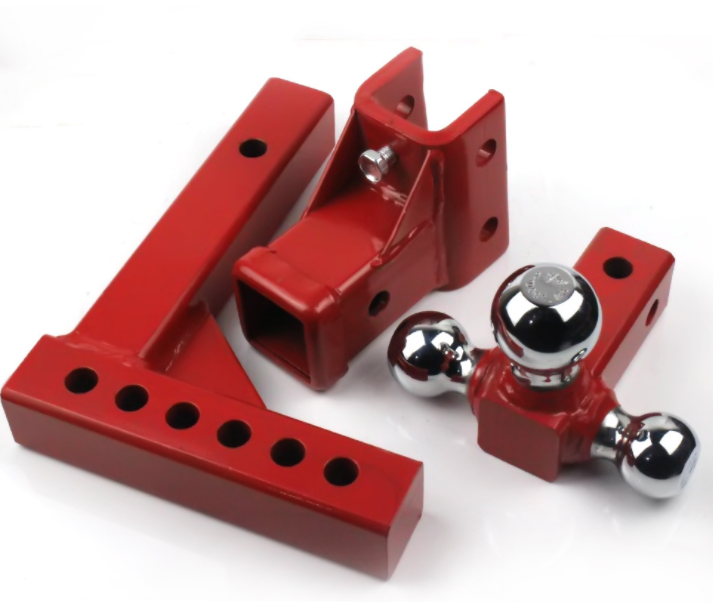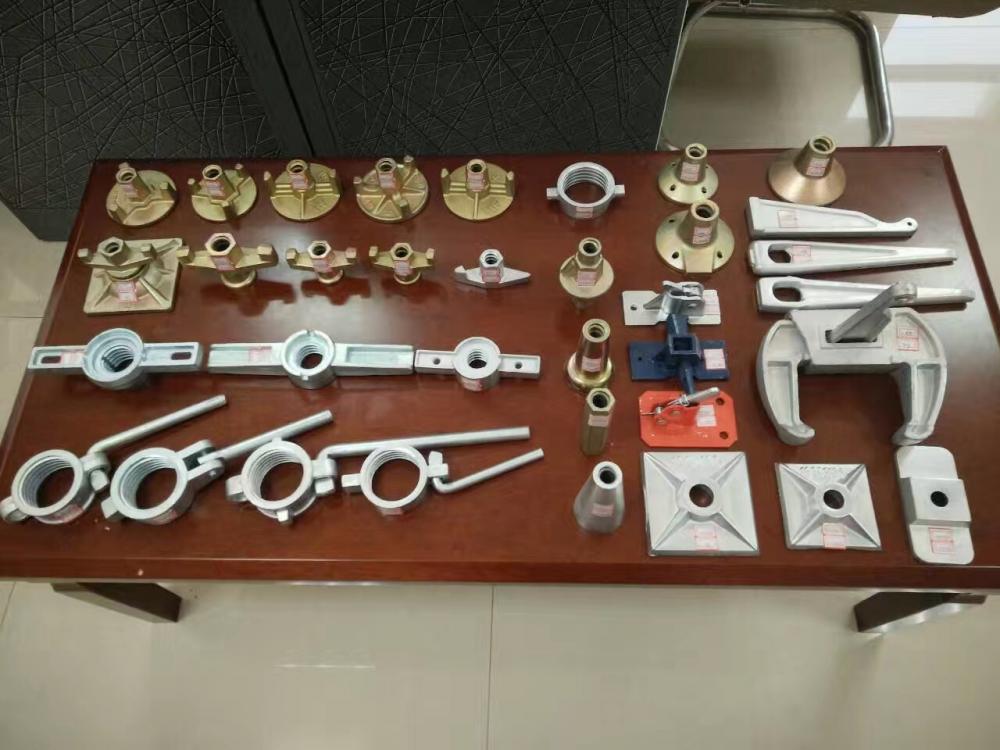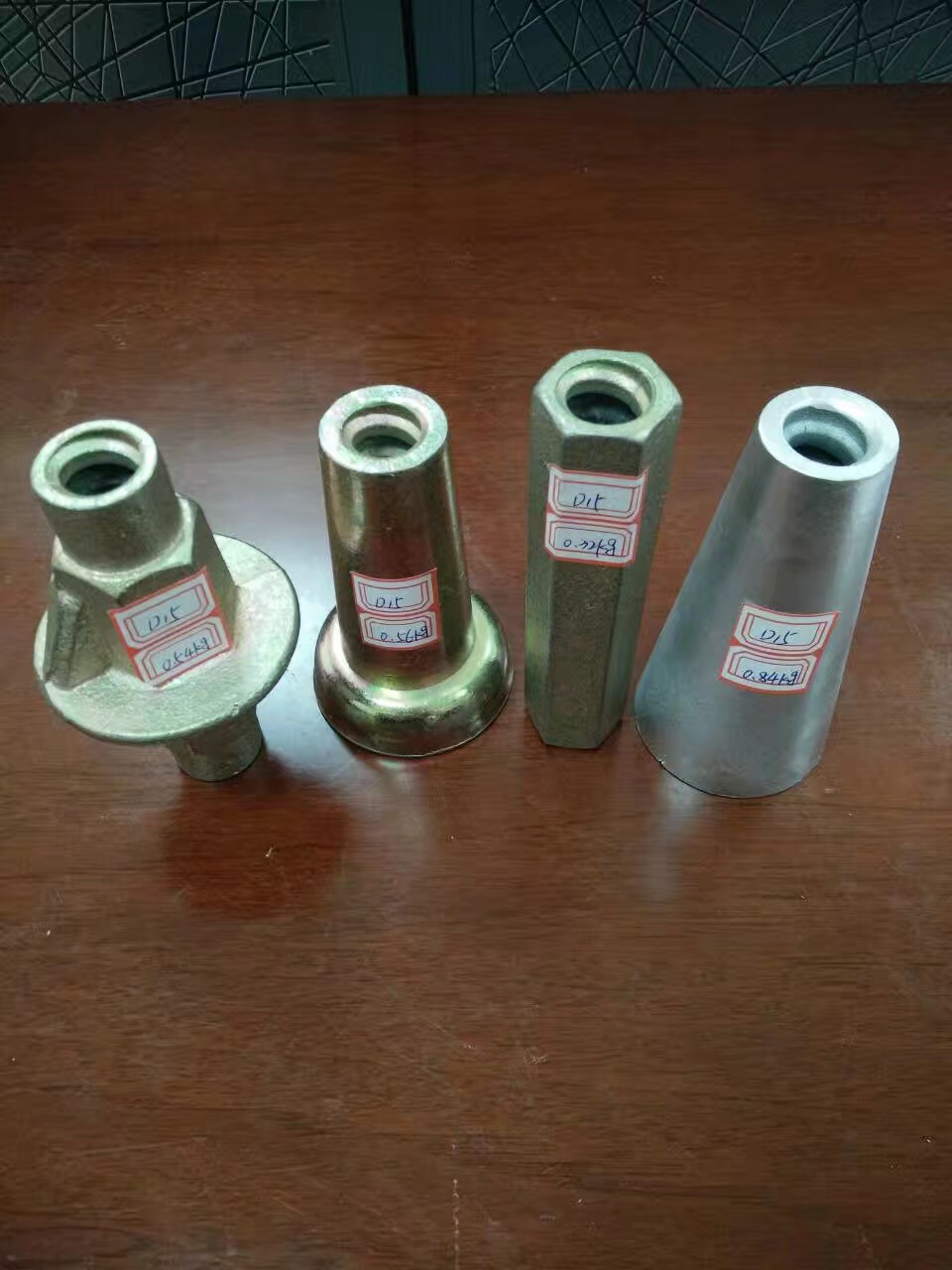1. Introduction and classification Sand blasted
Aluminum Die Casting Auto Parts are components used in the automotive industry that are manufactured through the
Die Casting process and then subjected to sandblasting. Sandblasting is a surface treatment technique that involves propelling fine abrasives at high velocity to clean or shape the surface of a material. This process helps to remove any impurities, smooth out rough surfaces, and create a matte finish on the aluminum auto parts. In this article, we will explore the features and benefits of sand blasted aluminum die casting auto parts.
Classification:
Sand blasted aluminum die casting auto parts can be classified into several categories based on their specific applications and functions. Some common examples include:
Engine Components:
These parts are responsible for the proper functioning of the engine. Examples include cylinder heads, engine blocks, and oil pans. Sandblasting these components helps to remove any residual dirt, rust, or paint, ensuring optimal performance and longevity.
Transmission Components:
These parts are essential for the smooth operation of the transmission system. Examples include transmission housings, gears, and shafts. Sandblasting these components helps to create a clean and even surface, promoting efficient power transfer and reducing friction.
Brake System Components:
These parts play a crucial role in the vehicle's braking system. Examples include brake calipers, rotors, and drums. Sandblasting these components helps to remove any brake dust, rust, or debris, ensuring optimal braking performance and safety.
Suspension System Components:
These parts are responsible for providing a comfortable and stable ride. Examples include control arms, steering knuckles, and sway bars. Sandblasting these components helps to eliminate any surface imperfections and improve the overall aesthetics and durability.
Exterior Body Parts:
These parts contribute to the vehicle's overall appearance and protection. Examples include door handles, mirror housings, and trim pieces. Sandblasting these components helps to create a uniform surface, preparing them for further finishing processes like painting or powder coating.
Benefits of Sand Blasted Aluminum Die Casting Auto Parts:
Enhanced durability: Sandblasting removes impurities and creates a smooth surface, increasing the lifespan of the auto parts.
Improved aesthetics: The sandblasting process creates a matte finish, giving the parts a sleek and professional appearance.
Enhanced performance: By removing any surface imperfections, sandblasting ensures optimal functionality and efficiency of the auto parts.
Easy maintenance: The sandblasted surface is easier to clean and maintain, reducing the need for frequent repairs or replacements.
Compatibility with other finishing processes: The sandblasted surface provides an ideal base for additional treatments like painting or powder coating.
In conclusion, sand blasted aluminum die casting auto parts offer various benefits and are classified into different categories based on their specific applications. These components provide enhanced durability, improved aesthetics, and improved performance for vehicles in the automotive industry. By utilizing the sandblasting process, the surface of these parts is prepared to meet high-quality standards and ensure optimal functionality.
2. How durable is it How Durable Are Sand Blasted Aluminum Die Casting Auto Parts?
Sand blasted aluminum die casting auto parts are known for their durability and long-lasting performance. Here, we will explore the factors that contribute to their durability and the benefits they offer in automotive applications.
Material Strength: Aluminum die casting is a process that involves injecting molten aluminum into a mold to form the desired shape. This results in parts that are strong and rigid, capable of withstanding the rigors of automotive use. The sand blasting process further enhances their strength by removing any surface impurities and creating a smooth, clean surface.
Corrosion Resistance: Aluminum has natural corrosion-resistant properties, making it an ideal choice for automotive applications. The sand blasting process removes any oxidation or contaminants from the surface, further enhancing its resistance to corrosion. This means that sand blasted aluminum die casting auto parts can withstand exposure to moisture, chemicals, and harsh environmental conditions without deteriorating.
Impact Resistance: Automotive parts are often subjected to high levels of impact and vibration. Sand blasted aluminum die casting auto parts are designed to handle these conditions and offer excellent impact resistance. The sand blasting process helps to strengthen the surface of the parts, making them more resistant to dents and dings that may occur during use.
Heat Dissipation: The thermal conductivity of aluminum is another key factor that contributes to the durability of sand blasted aluminum die casting auto parts. Aluminum has excellent heat dissipation properties, which means it can effectively dissipate heat generated by the engine or other components. This helps to prevent overheating and ensures the longevity of the parts.
Surface Protection: The sand blasting process not only enhances the durability of the parts but also provides added surface protection. By removing any surface imperfections and creating a smooth finish, the parts are less susceptible to scratches, abrasions, and other forms of wear and tear. This helps to maintain the aesthetic appeal of the parts and prolong their lifespan.
Maintenance and Repair: Sand blasted aluminum die casting auto parts are relatively easy to maintain and repair. The smooth surface makes them easy to clean, and any damage can be addressed with simple repairs or replacements. This reduces downtime and ensures that the parts can be quickly restored to their optimal condition.
In conclusion, sand blasted aluminum die casting auto parts are highly durable due to their material strength, corrosion resistance, impact resistance, heat dissipation properties, surface protection, and ease of maintenance and repair. These parts can withstand the demanding conditions of automotive use, offering long-lasting performance and reliability. Whether used in engine components, transmission parts, or exterior body parts, sand blasted aluminum die casting auto parts provide the durability needed for the efficient operation of vehicles.
3. Main uses and application fields Main Uses and Application Fields of Sand Blasted Aluminum Die Casting Auto Parts
Sand blasted aluminum die casting auto parts are widely used in the automotive industry due to their exceptional durability, strength, and performance. These parts undergo the die casting process and are then subjected to sandblasting, which enhances their surface quality and provides several benefits. In this article, we will explore the main uses and application fields of sand blasted aluminum die casting auto parts.
Engine Components: Sand blasted aluminum die casting auto parts play a crucial role in the functioning of the engine. These parts include cylinder heads, engine blocks, oil pans, and valve covers. The sandblasting process helps to remove any impurities, smooth out rough surfaces, and create a matte finish, ensuring optimal performance and longevity of the engine.
Transmission Components: The transmission system of a vehicle relies on various components for smooth operation. Sand blasted aluminum die casting auto parts such as transmission housings, gears, and shafts are used in this system. The sandblasting process ensures a clean and even surface, promoting efficient power transfer and reducing friction for enhanced transmission performance.
Brake System Components: The safety and effectiveness of the braking system depend on high-quality components. Sand blasted aluminum die casting auto parts such as brake calipers, rotors, and drums are utilized in this system. The sandblasting process eliminates any brakedust, rust, or debris, ensuring optimal braking performance and safety.
Suspension System Components: The suspension system of a vehicle is responsible for providing a comfortable and stable ride. Sand blasted aluminum die casting auto parts like control arms, steering knuckles, and sway bars are used in this system. The sandblasting process helps to eliminate surface imperfections, improving the overall aesthetics and durability of these parts.
Exterior Body Parts: The exterior body parts of a vehicle contribute to its overall appearance and protection. Sand blasted aluminum die casting auto parts, including door handles, mirror housings, and trim pieces, are widely used in this area. The sandblasting process creates a uniform surface, making these parts ready for further finishing processes like painting or powder coating.
The application fields of sand blasted aluminum die casting auto parts extend beyond the automotive industry. These parts are also utilized in other sectors such as aerospace, industrial machinery, and consumer electronics. Their durability, strength, and corrosion resistance make them suitable for various applications that require high-performance components.
In conclusion, sand blasted aluminum die casting auto parts find extensive use in the automotive industry for engine components, transmission components, brake system components, suspension system components, and exterior body parts. The sandblasting process enhances their surface quality, ensuring optimal performance, durability, and aesthetics. Whether used in passenger cars, commercial vehicles, or other applications, sand blasted aluminum die casting auto parts offer reliability and long-lasting performance.
4. Cause of the fault Causes of Faults in Sandblasted Aluminum Die Casting Auto Parts:
Insufficient Surface Preparation: One of the common causes of faults in sandblasted aluminum die casting auto parts is insufficient surface preparation before the sandblasting process. If the surface is not properly cleaned and prepared, it can result in poor adhesion of the abrasive material, leading to uneven or inadequate sandblasting. This can result in a subpar finish and reduced durability of the parts.
Improper Sandblasting Technique: Another cause of faults is the use of improper sandblasting techniques. If the air pressure or the speed of the abrasive material is not controlled properly, it can lead to excessive erosion of the surface or uneven removal of impurities. This can result in an inconsistent finish, with some areas being over-roughened or under-treated.
Poor Quality Abrasive Material: The choice of abrasive material used in the sandblasting process can also contribute to faults in the parts. If the abrasive material is of low quality or does not match the requirements of the particular aluminum alloy being used, it can cause excessive erosion or damage to the surface. This can lead to roughness, pitting, or other defects in the finished parts.
Inadequate Quality Control: Insufficient quality control measures during the sandblasting process can also result in faults. If there is a lack of proper inspection and monitoring of the sandblasting equipment, it can lead to inconsistencies in the process. This can result in variations in the surface finish and quality of the parts, leading to potential performance issues or aesthetic flaws.
Improper Handling and Storage: Faults in sandblasted aluminum die casting auto parts can also occur due to improper handling and storage after the sandblasting process. If the parts are not handled with care or stored in a suitable environment, they can be susceptible to contamination, scratches, or other forms of damage. This can compromise the integrity of the sandblasted surface and affect the overall quality of the parts.
In conclusion, several factors can contribute to faults in sandblasted aluminum die casting auto parts, including insufficient surface preparation, improper sandblasting techniques, poor quality abrasive material, inadequate quality control, and improper handling and storage. To ensure the production of high-quality parts, it is essential to address these potential causes and implement appropriate measures to prevent or minimize their impact.
5. Troubleshoot the fault Troubleshooting Faults in Sandblasted Aluminum Die Casting Auto Parts:
When dealing with faults in sandblasted aluminum die casting auto parts, it is essential to identify and address the underlying issues to ensure the production of high-quality parts. Here are some common faults and troubleshooting steps:
Uneven Surface Finish:
Cause: Improper sandblasting technique or inconsistent air pressure.
Troubleshooting: Check the sandblasting equipment for any defects or malfunctions. Adjust the air pressure to ensure it is consistent and suitable for the specific part being sandblasted. Proper training and supervision of operators are also crucial to ensure the correct technique is used.
Poor Adhesion of Surface Coatings:
Cause: Insufficient surface preparation or low-quality abrasive material.
Troubleshooting: Thoroughly clean and prepare the surface before sandblasting to remove any contaminants or impurities. Ensure the abrasive material used is of high quality and suitable for the specific aluminum alloy. Regularly inspect the sandblasting equipment to ensure proper functioning.
Rough or Pitted Surface:
Cause: High-speed abrasive material or improper sandblasting technique.
Troubleshooting: Adjust the speed of the abrasive material to prevent excessive erosion of the surface. Train operators to follow the correct sandblasting technique, ensuring consistent and even coverage. Conduct regular quality checks to identify any deviations from the desired finish.
Corrosion or Oxidation:
Cause: Inadequate surface preparation or improper storage.
Troubleshooting: Prioritize thorough surface cleaning and preparation before the sandblasting process. This includes removing any oils, dirt, or oxidation present on the parts. Implement proper storage procedures to protect the sandblasted parts from moisture and other environmental factors that could lead to corrosion.
Inconsistent Quality Control:
Cause: Lack of proper inspection and monitoring during the sandblasting process.
Troubleshooting: Establish a robust quality control system that includes regular inspections of the sandblasting equipment and the finished parts. Implement clear criteria for acceptable surface finishes and conduct random quality checks to ensure consistency.
Damage during Handling or Storage:
Cause: Improper handling or unsuitable storage conditions.
Troubleshooting: Train personnel on proper handling techniques to prevent scratches, dents, or other forms of damage. Implement appropriate storage measures such as using protective packaging, maintaining suitable humidity levels, and avoiding exposure to harsh elements.
In conclusion, troubleshooting faults in sandblasted aluminum die casting auto parts involves addressing issues related to surface finish, coating adhesion, surface quality, corrosion, quality control, and handling/storage. By identifying the root causes and implementing the necessary corrective measures, manufacturers can ensure the production of high-quality parts that meet the rigorous standards of the automotive industry.
6. How to install and use How to Install and Use Sandblasted Aluminum Die Casting Auto Parts:
Installing and using sandblasted aluminum die casting auto parts requires careful attention to detail and following proper procedures. Here is a step-by-step guide on how to install and use these parts effectively:
Pre-installation Preparation:
Ensure that you have the correct sandblasted aluminum die casting auto parts for your specific vehicle model.
Inspect the parts for any visible damage or defects. If any issues are found, contact the supplier or manufacturer for a replacement.
Clean the installation area to ensure a smooth and debris-free surface for proper fitting.
Installation Process:
Follow the vehicle manufacturer's guidelines and recommendations for installing the specific part.
Use appropriate tools and equipment to securely fasten the sandblasted aluminum die casting auto part in place.
Double-check the alignment and positioning of the part to ensure it fits properly and does not interfere with other components.
Post-Installation Considerations:
Inspect the installed part to ensure it is securely attached and properly aligned.
Test the functionality of the part to ensure it operates correctly.
Conduct a visual inspection to ensure there are no visible gaps or areas of concern.
Using Sandblasted Aluminum Die Casting Auto Parts:
Follow the vehicle manufacturer's instructions and guidelines for using the specific part.
Maintain regular maintenance and cleaning schedules to ensure the longevity and optimal performance of the part.
Avoid exposing the sandblasted surface to abrasive materials or harsh chemicals that could damage the finish.
Regularly inspect the part for any signs of wear, damage, or corrosion. If any issues are found, address them promptly to prevent further damage.
Proper Handling:
When handling sandblasted aluminum die casting auto parts, use gloves to avoid leaving fingerprints or oils on the surface.
Avoid dropping or mishandling the parts to prevent any dents or scratches that could damage the finish.
Store the parts in a clean and dry environment to prevent corrosion or contamination.
Conclusion:
Installing and using sandblasted aluminum die casting auto parts requires attention to detail and adherence to proper procedures. By following the steps outlined above, you can ensure the correct installation and effective use of these parts in your vehicle. Proper handling, maintenance, and regular inspections will help maximize the longevity and performance of sandblasted aluminum die casting auto parts.
Ningbo City Yinzhou Ruican Machinery Co, Ltd is direct manufacturer, covers the
Sand Casting Foundry.
Investment Casting Foundry and Machining Workshop, and offer the Ductile Iron &Grey Iron Sand Casting parts, investment casting parts, Aluminium castings and precision machining parts. The produced parts are widely used in Auto Parts: Agricultural, Marine: Architectural Machinery, Medical; Food Machinery,
Valves and so on. The material which we used is ductile iron: Aluminium: Bronze; Brass: Copper: carbon steel: stainless steel end so on.








